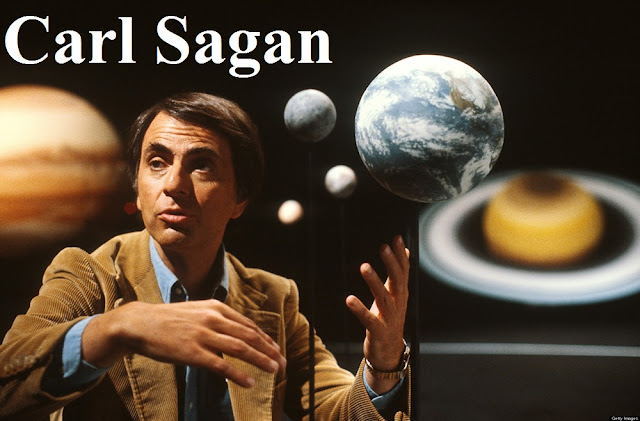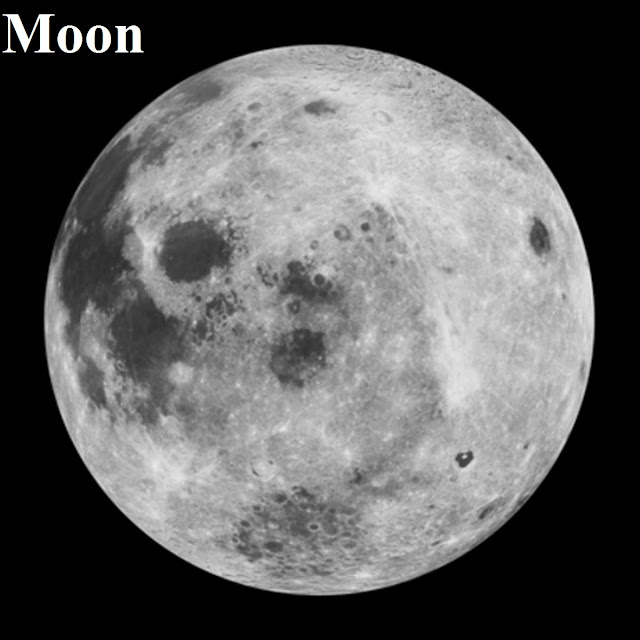It
would not be an exaggeration to say that just as the whole solar system,
including the sun, has been created by the laws of time, if the various kinds
of human deeds could be put aside for some time, the sun would change in the
future and our earth would be destroyed. Realizing this fact, the idea of
making other planets and satellites habitable began to take root in the minds
of scientists where not only humans, but all representatives of all the flora
and fauna of this earth would be replaced. The process by which a planet or
satellite is artificially transformed into habitable place, like the earth, is
called Terraforming or Terraformation.

Source: The
term Terraforming was first introduced to the public through the American
science fiction writer Jack Williamson's short story 'Collision Orbit'
published in 1942. There was a time when the term was considered only a
fascinating subject in science fiction short stories, novels, movies, video
games. But in the real world today, the term is gaining ground in both science
fiction and science.

Discussion in the Scientist Community: Different scientists have expressed their thoughts and opinions on this terraformation at different times. The foremost of these was the scientist Carl Sagan. Scientists and the general public today remember him with respect for his contribution to the Voyager Space Mission about 44 years ago. (For more information on the Voyager mission see 'Voyager, The Oldest Surviving Space Mission'. The link of the article is: https://spacejagat.blogspot.com/2020/02/voyeger.html)
He spoke of trying to terraforming through homogenous plants
like algae. But later, after knowing Venus in more detail, he had to abandon
his plan. In 1973, the scientist Sagan discussed the terraforming of Mars in
detail in his article Planetary Engineering on Mars. Today, after so many
years, the US space agency (NASA) has not canceled his plan, which means that
Sagan's thinking is equally relevant today. Michael Alaby, Christopher McKay,
James Lovelock, Robert Haynes also wrote and discussed articles on the
terraformation of planets and satellites at different times. Most of these scientists
discussed the terraformation of Mars. In this context, the Biophysicist Robert
Haynes coined a new term, 'Ecopoiesis', which means the origin of the ecosystem
on an inanimate planet, and this is the first step in terraforming.


Originally
life could have originated on three types of planets or satellites viz-
1.
Habitat Planet or Satellite: A place like Earth's climate where life and human
habitation are possible at ease.
2.
Biocompatible Planet or Satellite: A place where life is not initially found,
but on the surface of which all the basic and fundamental conditions, necessary
for the emergence and development of life, exist.
3.
Easily Terraformable Planet or Satellite: The planets or satellites that use
moderate planetary engineering to turn biolcompatible planets or satellites or
habitable planets or satellites.
Possible
Method: In order to make a planet or satellite habitable, it is
necessary to know well the geochemical character, geographical conditions and
astronomical features of that place. If there is a deficiency in these three
conditions, the deficit must first be artificially filled. Scientists in the
field of Astrobiology say that if there is a constant supply of liquid water,
simple or complex organic particles and uninterrupted energy for metabolism,
then life will one day emerge there.
Thus,
when the environment of a place becomes suitable for the full development of an
organism, a transparent roof will be built a few kilometers above the surface
of the enclosed place. This time the specific air pressure of the breathable
air and gravity inside the enclosed place must be maintained. The life cycle of
a single-celled microorganism will begin as the first step in the origin of the
organism. Bacteria, coming from genetic engineering, can be used. Then if the
environment is a little more favorable, a very simple plant class can be
brought there. If the amount of oxygen in the atmosphere increases a little
more, it may be possible to make the planet or satellite fully habitable by
bringing in a little more advanced plant class. After increasing the amount of
oxygen more, from a variety of simple organisms to a highly developed organisms
can be introduced. Note that genetically modified plants, animals and humans
will predominate in that area. These animals will be further advanced through
Biotechnology and Cybernetic Enhancement. (Cybernetic Enhancement: The
process by which one or more of a person's physiological parts are mechanically
replaced.) Synthetic Biology will play a very important role in the
creation of such advanced plants and animals in the future. Therefore, it can
be said that this little-discussed section of biology will play an important
role in terraforming. For this, NASA is thinking of a project called DARPA
(Defense Advance Research Project Agency). However, all these things have been
said to be theoretical only in the research papers. But standing on the ground
of reality, no project has been started till date, no country in the world, no
government or private organization has offered any money for it.
Possible
Places: This time we will know a little bit about the places in
space that were once identified as suitable for terraformation or are still
selected.
Mercury:
Mercury is almost in the cancellation list due to its high temperature because
its closest proximity to the Sun. Although small in size, Mercury has about the
same gravitational force as Mars due to its density. Without the strong
influence of the solar wind, Mercury's gravitational force could be about 30 percent
of Earth's gravitational force, which is good enough for the size of Mercury.
It has been proven that in the past Mercury made a temporary effort to protect
itself from the solar wind. Terraforming on this planet is possible only in its
two polar regions. For this process a huge amount of liquid water needs to be
supplied to the polar region. (Approximately 3,50,000,000,000,000,000,000
kilogram) This will spread a thin layer of Titanium dioxide around the region
and break down the water into hydrogen and oxygen. Hydrogen is light so it will
go into space, and if this process continues for the next 70 years, Mercury
will have a dense layer of oxygen. Later nitrogen can be added artificially
here. In this way breathable air and necessary air pressure can be created.
There is also the necessary gravitational force.

Venus:
Venus is the hardest place in terms of terraforming. There are basically two
things to do here. First, the huge amount of carbon dioxide in Venus must be
removed and the planet's average temperature must be brought down to a
tolerable level from 450 degrees Celsius. Somehow removing the carbon dioxide
stored on the warmest planet in the solar system will lower the temperature
because this gas is causing the greenhouse effect on Venus. However, no
effective mechanism for this difficult task has been announced yet.

Moon:
The value of the Moon's gravitational force is one-sixth of the Earth's
gravity. So here too, terraformation is not only a very difficult task but
almost impossible. However, some scientists believe that although the moon
cannot be fully terraformed, it is possible to partially terraforming some
regions. According to them, if 200 trillion tons or 2,00,00,00,00,00,00,000
kilogram of oxygen could be supplied to the moon, and if few hundreds of
water-particle bearing comets, like Haley's comet, hit the surface of the moon,
it would be possible to take the moon to the way of terraformation.

Mars:
Mars is a planet like Earth from different angles so that in the past it had
the same weather and liquid water as Earth. But the obvious reason for why all
that was lost from the surface of Mars is not clear to us today. The artificial
environment created by terraforming will require dense weather and warming.
Temperatures can be raised here by supplying greenhouse gases such as carbon
dioxide. However, carbon dioxide alone cannot maintain the temperature of
water. So more different types of greenhouse influencers can be used here.

Earth:
Strange and surprising to hear, but our world also needs terraforming. If human
civilization and the living world are to survive on earth for hundreds of
years, then we may have to practice terraformation on earth. There are several
ways of terraformation that can be used to restore the Earth to its normal state
from arbitrary deforestation and uncontrolled environmental pollution, such as
carbon dioxide removal, solar radiation control, perfect use of
geo-engineering, the presence of genetically modified organisms etc.

Outside
of the mentioned and discussed places, there are a few more places in this
solar system where we have marked for terraforming such as a few satellites of
Jupiter and Saturn (Titan, Europa, Ganymede, Callisto, Enceladus, etc.) and the
dwarf planet Ceres.

Difficulties:
Terraforming
and its reality is a controversial issue. It involves people's beliefs, ethics,
financial management, infrastructural system, political thinking and unknown
problems or dangers in the future. Here are some possible reasons.
Morality:
Here comes the conflict between science and philosophy. Notable among those who
have supported or had supported terraforming are scientist Robert Zubrin,
Martyn Fogg or the late scientist Carl Sagan. According to them, it is not a
crime to terraform the planets or satellites in harmony with their own
ecosystems. The earth will one day be destroyed, so it must be done in order to
save mankind and all living things. Scientist Christopher McKay says there is
no problem if there is no life on another planet or satellite. But if it remains,
then it must get equal opportunity with the creatures of the world to live its
life. Otherwise it will be an unforgivable crime.


Financial
Management: This project may sound good to hear but
there is no denying that it will require a huge amount of money to establish it
on real ground. Although many scientists around the world have expressed their
views on this, no financial assistance has been announced from any
international organization, government or non-government organization. It is
virtually impossible for any single government or organization to complete such
an ambitious project.
Infrastructural
Insufficiency: Although this project is quite optimistic,
so far the science organizations have not been able to come up with any proper
practical methodology or technology for this project. So it is not possible to
invest money according to the plan. So far, only a few models of technology
have been developed yet.
Political
issues: Intense nationalism, fierce competition between
different countries and the public relations politics of the ruling party are
the driving forces behind the space plans of different countries of the world.
No country has come out of such thinking and practiced space technology
independently. Since it is not possible for any one country to complete this
project, even if we work in a cooperative manner, trivial political divisions
can take place here. The potential for inequality between an enemy country or
an economically poor country is high.
Possibility
of Future Unseen Problems or Dangers: We do not know what the
consequences would happen if the terrain and atmosphere of a planet or satellite
will change completely from one state to another. We also do not know the way
how to tackle that very situation.
We
do not know what the future holds for our planet today, but we can only hope
that this ambitious project, a joint venture of scientists, engineers,
governments and international organizations, will benefit all living things,
including people all over the world.

DECLARATION:
All The Images Have Been Sourced From Google.
